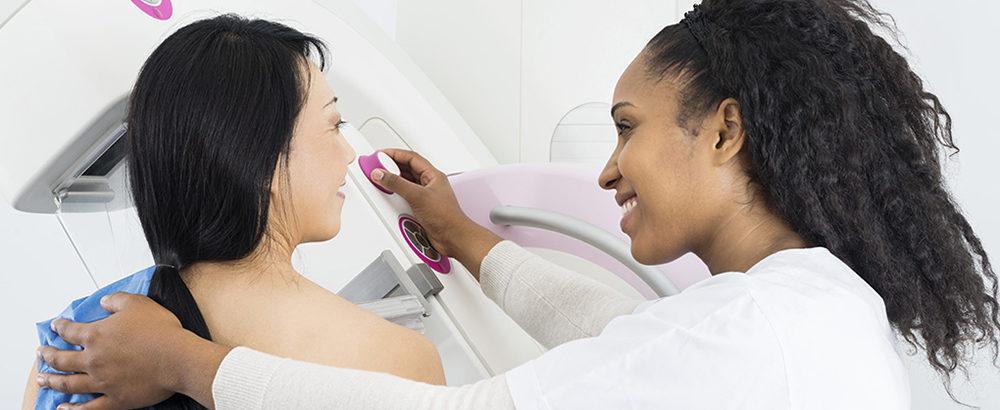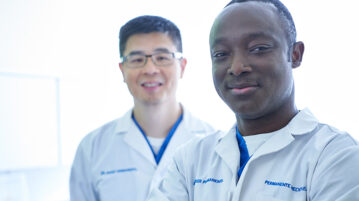By Eugene Wu, MD
Pink ribbons have become popular for raising awareness about breast cancer, as have 5K walks and runs. Such efforts are important for improving prevention: After all, breast cancer is the most commonly diagnosed cancer in women in the United States, with about 237,000 women diagnosed each year, according to the American College of Obstetricians and Gynecologists. And many women survive breast cancer if it’s caught early, when it’s easier to treat.
While many cases of breast cancer are caught via screening, some are first detected by women themselves via breast self-exam. Who should perform regular self-exams, and how often? Within the medical community, thinking on this has changed in recent years.
Should all women perform self-exams?
In mid-2016, the American College of Obstetricians and Gynecologists changed its guidance on self-exams. It now recommends that only high-risk women perform breast self-exams due to the rate of false positives. But that doesn’t mean women considered average risk shouldn’t be aware of what’s normal for them in terms of their breasts’ appearance and feel. (Most often when breast cancer is detected because of symptoms such as a lump, it’s in the course of regular activities, like getting dressed or taking a shower, according to the American Cancer Society.) Both the ACOG and the American Cancer Society advise women to contact their health care provider right away if they notice any changes.
Self-exams are still recommended for high-risk women, defined as those who have:
- A family history of breast cancer
- A personal history of breast cancer
- Mutations in BRCA1 or BRCA2 genes
- Previous treatment with radiation therapy
- Women who took the drug diethylstilbestrol or women whose mothers took it while pregnant (given to some pregnant women in the United States between 1940 and 1971 to prevent miscarriage)
- Dense breasts
How to do a breast self-exam
You can choose from among several different approaches when performing a monthly breast self-exam. Make sure to work around your period, if you’re still getting one – doing the exam a few days after is best, when your breasts are likely less tender and swollen. If you no longer have your period, you can do the exam around the same time each month.
If doing your check while in the shower, use the pads of your fingers to make a circular pattern around each breast, starting from the outside. Make sure to feel the armpits too.
When looking in a mirror, in addition to your physical check, do a visual inspection with arms at your sides, then again with your arms raised. Look for changes in contour, and see if you notice any swelling, dimpling, or changes to your nipples. Then, rest your palms on your hips and press, flexing your chest muscles, and check again for any abnormalities.
If you prefer to do your exam lying down, prop a pillow under your right shoulder, and put your right arm behind your head. Do the physical inspection method (what you’d do in the shower) using your left hand for your right breast. Repeat these steps to check your left breast. Squeeze each nipple, noting any discharge or lumps.
Whichever method you choose, do it in an organized, planned way, making sure you cover all areas.
When to call your provider
Make an appointment with your primary care provider or ob-gyn to be evaluated within the next few days if you come across any of the following during a self-exam:
- Nipple tenderness
- Nipple discharge (especially clear or bloody)
- Nipple retraction (turning inward)
- Skin around the nipple is peeling or flaking
- A lump or thickening in or near the breast or underarm – this will likely feel like a hard, solitary nodule
- Dimpling on the breast
- Unexplained change in breast size, particularly if it’s on one side
What about mammograms?
These are still important. Most women diagnosed with breast cancer don’t show symptoms, so mammograms are the best way to detect breast cancer early. MAPMG recommends that average-risk women at age 40 make a shared decision with their doctor on whether they need to undergo a mammogram. At age 50, average-risk women should get a mammogram, and continue getting one every year or two after that, until about age 75. High-risk women should get a mammogram annually, beginning at age 30. Providers may order a breast MRI for those at highest risk.
Men, who also have breast tissue, are also at risk of breast cancer, but at much lower rates. Men with a personal history of breast cancer should also consult with their doctor annually on whether a mammogram is recommended.
To read more about women’s health issues at every stage of life, visit MAPMG’s Staying Healthy pages.
Eugene Wu, MD, is board certified by the American Board of Obstetrics and Gynecology in obstetrics and gynecology. He cares for patients at the Kaiser Permanente Towson Medical Center. He received his medical degree from the Johns Hopkins University School of Medicine and completed his obstetrics and gynecology training at Hospital of the University of Pennsylvania in Philadelphia.




